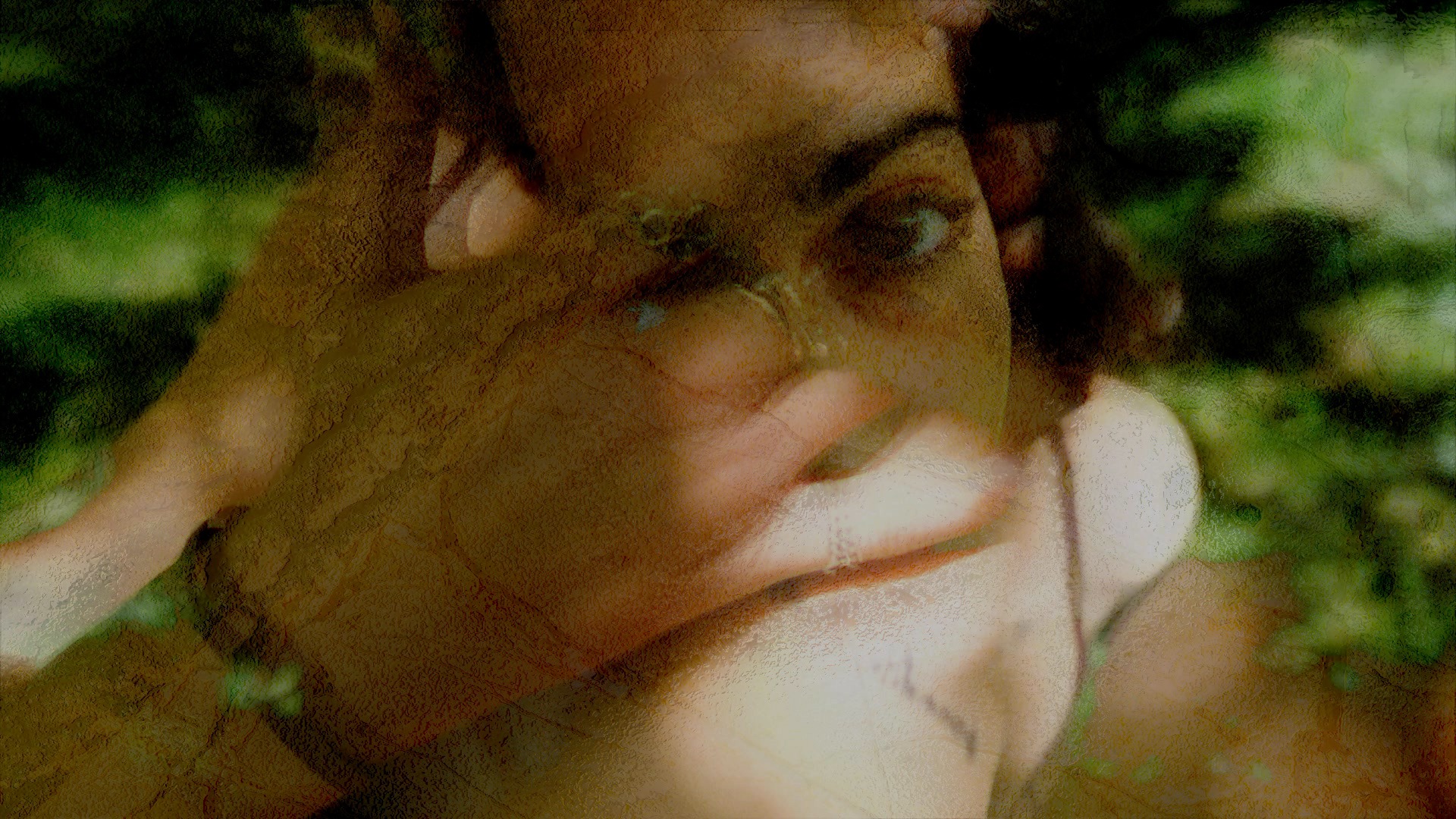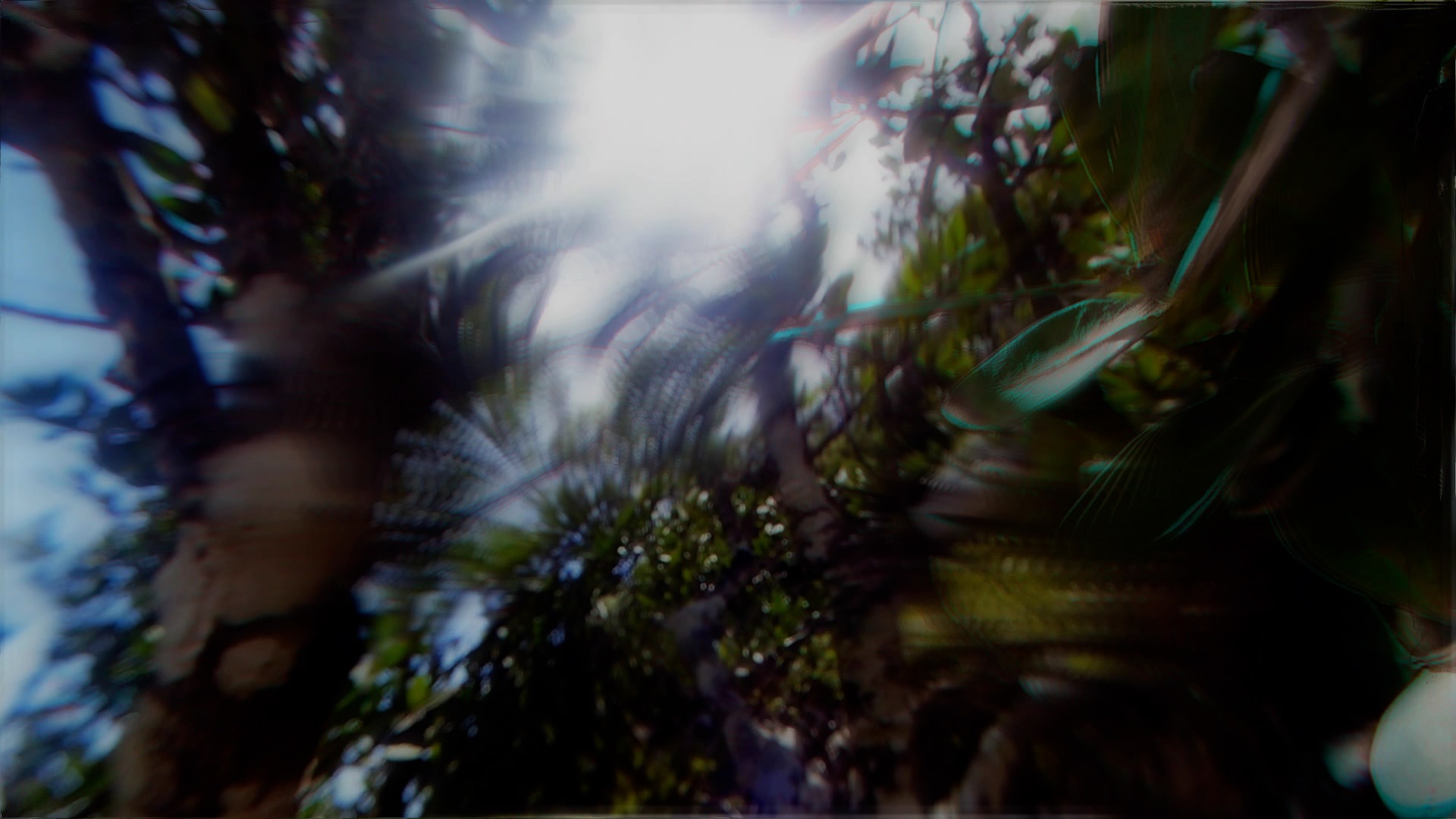Noise Diva & orah

This Klankvorm commissioned AV performance is created by Amsterdam based producer, dj and artist Noise Diva (Yara Said) and Italian, Rotterdam based visual artist and designer orah (Deborah Mora).
Yara Said is a multidisciplinary artist of Dutch and Syrian heritage based in Amsterdam with degrees in Painting and Fine Art from the University of Damascus and Sandberg Instituut in the Netherlands. During her masters studies she became fascinated with sound and music theory – and dancing to unconventional club beats. As Noise Diva, Yara explores personal politics, identity issues and cultural diaspora – with a wink – through her lyrical productions and eclectic DJ sets.
Deborah Mora is a Rotterdam-based visual artist and designer from the north of Italy who manipulates images through software and film to enact non-verbal forms of storytelling. She is learning to relinquish control and enjoy spontaneous forms of creativity through collaborations with musicians, dancers and other visual artists through multimedia installations and A/V performances.
Their Klankvorm AV commission celebrates the power of the throat and voice as symbols of childhood into womanhood and premiers during the latest edition of Klankvorm’s Audiovisual Explorations, a series of events delving deep into the synesthetic relationship between moving images and sound, held at the iconic Cinerama in Rotterdam on Friday 14 June.
Here they discuss their individual practices and the development of their Klankvorm commission – from a shared bodily trauma affecting each of their throats.
Yara: Noise Diva is a political, playful project. Many people are bored and frustrated with politics, and I understand their feelings. Politics often feels like a dark place filled with grey suits and blue collars, leaving no space for women of colour and soft spirits. That has to change. I see sound and music as universal tools for communication and I believe politics should hold space for justice and celebration not only pain and loss.
Yara: I personally love to dance, but after moving to Amsterdam, I started getting very bored of four-on-the-floor music – it is not playful enough for me. My music selection is undoubtedly political. I play a lot of unusual music, like experimental breaks, glitchy tracks, pop and rap. I love trap and drill, especially Tunisian, Moroccan, Egyptian, and Palestinian. I love playing lyrical songs; the accents are incredible. I also love amapiano, reggaeton, breakbeat, and bass-heavy sounds with soft, sensual vocals. It’s crucial to use the club as a political space, especially for the youth of the Netherlands and the diaspora. However, even in the avant-garde underground music scene, there is exclusivity. So I like to play pop and more leftfield silly music to deconstruct what is already deconstructed. I’m just naughty like that.
Deborah: I’m intrigued by images, I’m drawn to the meaning they carry, the symbolism they present, their texture or tactile qualities. I feel images in a very physical way, as with music. Music is very imaginative for me: if I hear a sound or a rhythm I already see pictures moving in my head. I’m interested in how sound and image can produce stories and convey meaning and produce physical sensations.
Yara: I began making music with a feminist ideology. I have a curious brain that loves to understand the source of energy and the mechanics of how things work, much like a child. I needed to see how things work. It wasn’t enough for me to take things as they were; I wanted to know more. So, I used the Ableton website, which has an excellent synthesis operator, and learned how ADSR (Attack-Decay-Sustain-Release) works—the core of oscillation. I then started making my own noise machines, spending hours in the lab listening to metal and soldering noise-making machines.
Deborah: For my visual material, I’m intrigued by textures, dynamics and composition. I used to employ 3D to create the world and the pictures exactly how I wanted them. But now I’m more drawn to videography. I like the spontaneity of it: you can plan some things out but everything else is much more in the moment and subject to things beyond your control. This is also why I love the performance aspect of my practice, where I manipulate the footage I shot – live. Performing is in the moment, it is improvisation. It is teaching me to get rid of control. I’m a perfectionist but sometimes it’s more detrimental than beneficial. I want to challenge my continuous chase for perfection. I want to accept the flaws in my practice, and see them as something unique rather than something that I need to get rid of. I’m slowly embracing this, which is why this AV collaboration with Yara feels very special. It is very personal as it is really part of this artistic journey.
Yara: I reached out to Deborah almost two years ago and the collaboration didn’t work out so when she contacted me this time I was very excited. I told her that I wanted to do something bold, something big.
Deborah: The collaboration started by just talking. From our phone calls and conversation, we started recognising similarities in our practice but also in our experiences. We both are, and haven been, moving around a lot. I come from the Alpine northern area of Italy, from a small village where there is so much nature around. I moved away from Italy to study in the city in the Netherlands when I was 19. I was a very introverted and ingenuous teenager, being in a country and environment that is not your homeland deeply influenced me.

Yara: For the last four years I had the urge to sing, as in my early twenties I was extremely shy and insecure. Going through a war and having to be silent for many years and hide from oppression forces did not help my voice to develop. I moved to the Netherlands when I was 24 and I started finding a passion for singing. I would sing along with the music while painting, and I was really enjoying my own voice.
Deborah: In one of our first talks, it was very surprising for us to discover that we had similar psychosomatic symptoms related to the throat. Yara gets an inflamed throat from her inability to communicate really sensitive topics to her mum. And I have been experiencing *chuckles* a form of hiccups that I developed after participating in a movement and dance workshop that involved psychosomatic exercises that must have unlocked something in me. Sometimes those hiccups would get so bad that I couldn’t breath.
Yara: Women in my country go through extreme situations and I think it’s so brave when they sing. In my region, especially in my home town, there is a lot of folk music and that also inspires me. It’s so beautiful to think about the larynx as your vocal cords, that let you talk and sing, but also create passages for breathing, the breath of life, the passage of the soul.
Deborah: Bodies keep the score. Growing up, maturing, becoming a young woman, finding your home. We realised the throat is such a soft, but powerful organ. It is a tunnel for breathing, it brings food to our stomach, it is the home of the larynx (the voice box) and the vocal cords that we use for speaking, singing and humming. But it is also an organ that holds many of our emotions.
Deborah: We really want to bring attention to the throat and the larynx and the power that they hold. Moreover, we aim to celebrate the womanhood (and childhood) they encapsulate. We connected this with our origins and travels, particularly places like the Alpine forests and the Mediterranean Sea, which touches both our home countries of Syria and Italy. These places are rich in culture and natural beauty. The Mediterranean biome represents home, with the sea acting as a body of water that symbolises home – a watery womb that nurtures you but can also drown you, much like the singing of the sirens.
Yara: The sonic landscape is a beautiful piano chord progression with a voice humbly singing, heavily affected with vocals. The singing I used is inspired by the Arabic genre Tarab, where the singer just hums the “ahat” until they and the audience are in a trance. However, I am humming a pained voice, like a whale in the ocean. The sonic sounds then turn violent before settling at the end.
For more information about the artists please check:
This Klankvorm commission is made possible with the generous support of Mondriaan Fund.